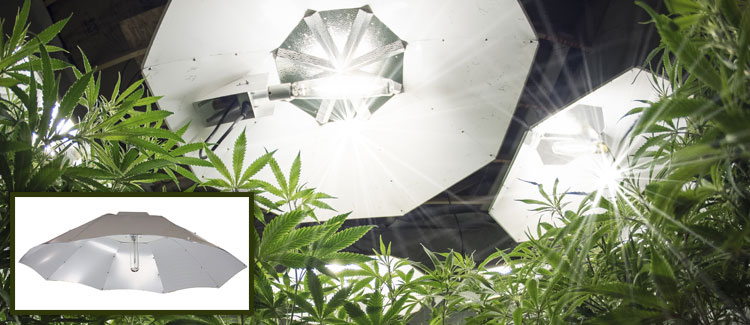
No matter how amazing your grow room lights may be, your plants won’t be able to meet their full potential without the proper grow light reflectors.
If you were to set up your grow room with no reflectors at all, your plants would lose out on a huge amount of light. And every ACMPR grower knows that wasting precious light is a big mistake.
Luckily, there’s an easy way to keep this from happening. When you add grow light reflectors into your grow room or tent, the light will be reflected downwards towards the plant canopy. None of it goes to waste.
This complete guide to the grow light reflectors in Canada will not only answer all of your hood-related questions but also cover some of the top models available to ACMPR growers (Read this article for all the info you need on the different laws in Canada).
Would you like an ACMPR medical license to grow up to 500 plants at home?
Top Products Comparison Table
Our #1 Choice
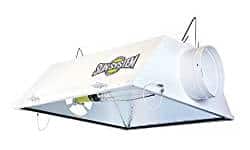
What the Pros Use
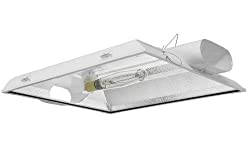
When on a Budget
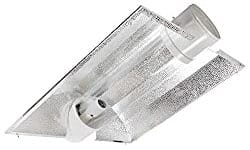
How to Choose Your Grow Light Reflectors
Deciding on the right grow light hoods & reflectors can be tricky, mainly because there are a few different types to choose from. Just to name a few, you’ve got open, air-cooled, adjustable, double-ended… and each of these types works best with a specific type of bulb.
So the first step in choosing your grow light hoods reflectors is to consider the type of bulbs you’re using. On top of this, there are many different shapes and sizes, there’s a variety of materials used, and of course, there are major differences in cost.
What to Consider When Buying Reflectors for Your Grow Lights
The main thing to remember when buying cannabis grow light reflectors is that every grow room is unique. What works for yours may not work for your buddy’s grow set up. But, with the right combination of bulbs and reflector hoods, you’re looking at a higher yield.
There is no “best type” or “best shape” of reflector – each has its own pros and cons. This buyer’s guide should help to clear up any confusion:
Open vs. Air-Cooled Design
The two main types of hood reflectors to choose from are open and air-cooled. An open reflector directs more light down to the plant canopy and it offers more adjustability. The hood material is more pliable, which means you have more control over where the reflected light ends up.
On top of that, open reflectors are a great choice for budget growers. Because of their basic design, these serve best as T5 grow light reflectors or grow light reflectors for CFL bulbs. But a more advanced grower will always go with an air-cooled set up (AKA closed reflector).
Air-cooled indoor grow light reflectors have a glass sheet on the bottom with cool air flowing through the closed-off compartment. This cool air is eventually pumped into the room, which is great if you’re using high-intensity bulbs that give off a lot of heat (like HPS or CMH).
Your crop is extremely sensitive to heat, but with an air-cooled reflector design, you won’t have to worry about it. Just expect to pay more for air-cooled HID grow light reflectors.
Hood Shape & Size
Deciding between a large and compact reflector size is pretty straightforward. If you’ve got a small grow tent operation, go with a compact reflector. Hundreds of plants? Start browsing for the largest grow light reflectors on the market.
Deciding on reflector shape is a bit trickier. Square, rectangular, and parabolic are the three most common shapes, but they’re not the only ones. In our honest opinion, you can’t go wrong with a rectangular reflector hood.
Reflective Material
Your reflector hood is obviously made from reflective material, but not all reflective materials are created equal. Cheap low-end reflectors are made from oxidized aluminum, which can reflect about 70% of light.
The next level up is anodized aluminum with an 85% reflectivity, and the high-end models are made from something called physical vapor deposition aluminum (PVD). PVD has a reflective index of about 95%, and this can make a huge difference in harvested yields.
There’s also a major difference between a polished/smooth reflective surface and a mottled/dimpled one. When in doubt, go with the dimpled surface – this is better for reflecting light in all directions.
Best Overall Grow Light Reflector
We had a lot to think about for deciding on the best overall grow light reflector. It doesn’t just have to do with the type, shape, and size of the reflector, but also with the quality of materials. Sun Systems reflectors tick all of these boxes…
Sun System Grow Lights
Our #1 Choice

Sun System specializes in high quality grow light ballasts and reflectors, but that’s not the only reason we’ve ranked them in the “best overall” spot. We love that Sun Systems has a ton of different reflector designs to choose from, including both single and double-ended models.
The one we love most is the 6” air-cooled single-end reflector hood. The 6” design makes these our go-to medium size grow light reflectors, and the powder-coated galvanized steel housing is as heavy-duty as it gets. If you’re looking for durable galvanized grow light reflectors, this is it.
Commercial High Yield Reflectors for Hydroponics
Commercial-level hydroponic grow ops require commercial-grade equipment. There’s a lot of square footage to cover with industrial grows, which makes it even more important to distribute light as effectively as possible. This won’t be too difficult with one of these light reflectors.
Raptor RP8AC Air-Cooled Reflector
Ideal for Hydroponics

The Raptor RP8AC is made for 8″ ducting, measuring 44″ x 33″. This broad light spread allows close placement to plants for maximum light delivery. We love that it’s got a 95% reflectivity thanks to its alamode hammertoe aluminum material.
It’s durable, made from pre-galvanized reinforced steel to get you through years of harvesting. The main downside to most commercial-grade grow equipment is high cost, and this air-cooled reflector is no exception.
Get started on your medical grow license today!
Step 1: Enter your email to book your ACMPR license appointment today
- Compassionate Practitioners Required
- Help with Approvals
- Low Cost Renewals
- No Stress Appointments
Sun System Grow Lights – Magnum XXXL
What the Pros Use

The Magnum XXXL is another grow light from the Sun System company, but this one is much better suited to large grow room floor plans. It’s pricey, but the patent-pending low-profile design allows for maximum vertical growing space, which is perfect if you’re working with low ceilings.
The interior of the Magnum XXXL is made from German-made aluminum that is 95% reflective. The light compartment is completely sealed, but the hinge feature makes it easy to access the bulb if you need to.
Cheap Air Cooled Grow Light Reflectors for Beginners
If you’re new growing, the two grow light reflector hoods just mentioned might have freaked you out a bit. But don’t worry, there are quite a few beginner-friendly reflectors that are more suited to the beginner skill level – and budget. Our favourite is the iPower Cool Tube Reflector Hood.
iPower 6 Inch Cool Tube Reflector Hood
When on a Budget
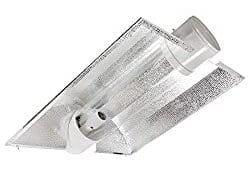
This affordable light systems kit is the perfect solution for beginners who are looking for a cheap (yet high-quality) reflector. It has a light coverage area up to 25 square feet and is compatible with a variety of bulbs (250W, 400W, 600W, 1000W HPS or MH).
Even though the iPower has a more-than-reasonable price tag, it still comes with high-grade 95% reflective aluminum. The cool tube design works similarly to an air-cooled reflector; as heat builds up in the tube, it is removed from the grow room through a 6″ duct.
Non-Air Cooled Grow Light Reflectors
Air-cooled reflector hoods aren’t for everyone. They tend to be pricey, and in some cases, the advanced air-cooling technology isn’t necessary. If that’s the case for you, you might benefit from the Adjust-a-Wing grow light system.
Adjust-a-Wing Grow Lights
Non-Air Cooled
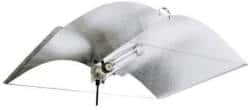
The thing we love most about the Adjust-a-Wing Grow Lights is its adjustability. It’s easy to maneuver the winged design to your exact liking, and this helps growers to create the ideal lighting conditions for their plants.
This single-ended reflector works well with both HPS and MH bulbs, and the 95% reflectivity is great for hydroponic and greenhouse growers. Just be sure to keep close tabs on temperatures with this one since it doesn’t come with air-cooling.
Reflectors for Small Tent Grows and Beginners
If you’re at the skill level where you’re still wondering how to add reflectors to a grow light, you’ll definitely want to start out small with your grow op. Investing in a small grow tent is the perfect starting point, and for that, you’ll need the reflectors good for beginner tent grows.
Sun System Grow Lights – Agrotech Magnum
For Small Grows
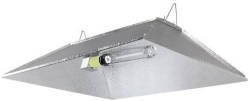
Our love for Sun System equipment is already pretty obvious, but let’s keep it going. The Sun System Agrotech Magnum is ideal for any small grow tent, specifically the single-ended open reflector hood.
It’s lightweight yet durable with 95% German aluminum and a galvanized steel frame. It’s suitable for MH and HPS bulbs, and more good news is that the price is right. Unfortunately, it comes unassembled, but it’s easy to set up and can be done in about 5 minutes.
Double Ended Grow Light Reflector
So far we’ve covered some of the choices for grow light reflectors for single-ended bulbs since these are more common for beginner growers with small operations. Don’t worry, we haven’t forgotten about the growers who prefer powerful double-ended bulbs.
Sun System Grow Lights – Dominator XXXL
Double Ended

The main advantage of using double-ended bulbs is the more even distribution of light, which is even more possible with a high-quality reflector like the Dominator XXXL (yes, another Sun System product). It’s sturdy with German-made UL-listed sockets that are compatible with a variety of DE bulbs.
How do grow light reflector hoods work?
It’s actually a very simple concept. The material that the hood is constructed from is highly reflective – ranging anywhere from 70 to 95% reflectivity depending on the quality.
As light is emitted from bulbs, the light’s photons travel in a straight line until they come in contact with the reflector hood. Once the photons hit the surface of the hood, they’ll be reflected towards the plant canopy.
What are the different types?
We’ve already covered two popular types – open and air-cooled – but there’s one more that we should talk about: cool tube. This is essentially just a glass tube with a lightbulb connector inside.
The main point of using a cool tube is to contain the heat generated from grow lights. They are effective at minimizing heat, but they’re not as effective for light reflectivity as a full-on grow light reflector hood (unless you’re talking about the iPower cool tube and reflector hood combo).
They can be handy, though, especially if you don’t have enough space to fit a full-sized air-cooled reflector hood in your grow space.
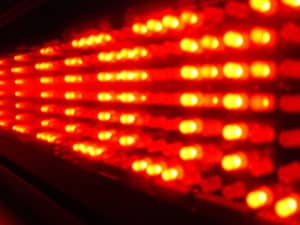
What materials can reflectors be made from?
All reflectors for cannabis grow rooms are made from aluminum, but there are different grades of aluminum to choose from. The lowest quality is oxidized, followed by anodized, then PVD. PVD is by far the best since it has the highest percentage of light reflectivity.
Do grow light reflectors increase heat in the grow tent?
No. They do just the opposite if you’re using air-cooled reflector hoods (or cool tubes). Air-cooled hoods come with a glass seal to prevent heat from taking over the plant canopy. They’re attached to ducting so that the heat can be released out of the grow room.
However, you should keep a close eye on grow room temperatures if you’ve opted for more budget-friendly open reflectors. Open reflectors don’t have this same heat-reducing feature.
Conclusion
If you’re still wondering “should I use light reflectors to grow?”, the answer is always yes. Grow light reflectors are essential to every indoor marijuana growing enterprise, no matter if that means a small-time ACMPR Vivosun tent or commercial-level warehouse grow.
Adding grow light reflectors like the Sun System Grow Lights will help your plants to get the light that they crave for performing photosynthesis. And when this happens, you can count on healthier plants and greater yields.

Reader Interactions